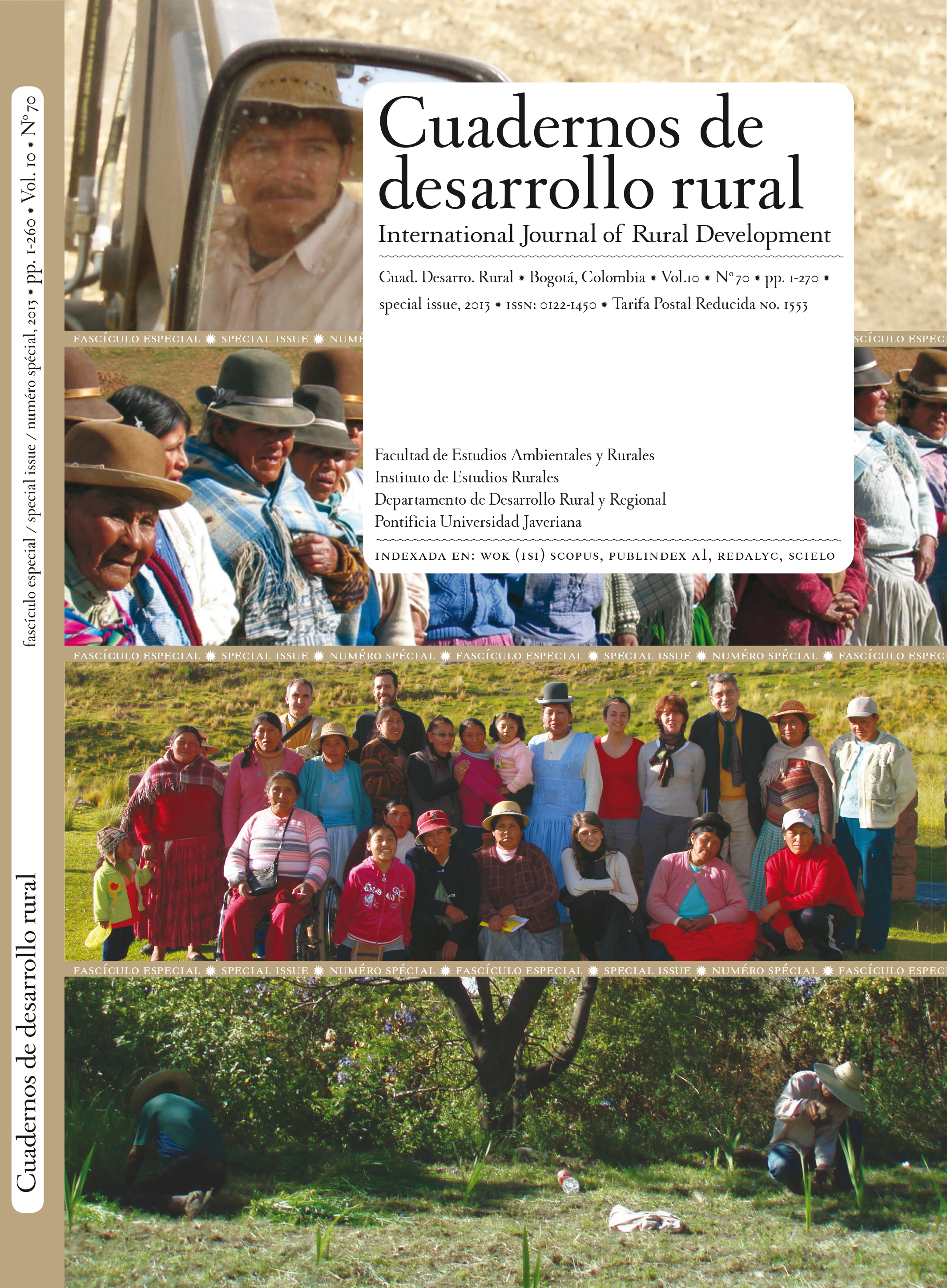Abstract
Development projects have changed from a technical and top-down vision to an integrated view pursuing economic, social and environmental sustainability. In this context, planning and management models with bottom-up approaches arise, as the Working With People (WWP) model, that emphasizes on the participation and social learning, also incorporating a holistic approach stemming from its three types of component: ethical-social, technical-entrepreneurial and political-contextual. The model is applied in a rural development project, managed by an Aymara women’s organization in Puno, Peru. The WWP model is considered as a useful vehicle for promoting leadership and capacity building in technical, behavioral and contextual project management skills, so that women may become protagonists of their own development, thereby transforming their craft activities into successful and sustainable businesses.Cuadernos de Desarrollo Ruralis registered under a Creative Commons Attribution 4.0 International Public License. Thus, this work may be reproduced, distributed, and publicly shared in digital format, as long as the names of the authors and Pontificia Universidad Javeriana are acknowledged. Others are allowed to quote, adapt, transform, auto-archive, republish, and create based on this material, for any purpose (even commercial ones), provided the authorship is duly acknowledged, a link to the original work is provided, and it is specified if changes have been made. Pontificia Universidad Javeriana does not hold the rights of published works and the authors are solely responsible for the contents of their works; they keep the moral, intellectual, privacy, and publicity rights.
Approving the intervention of the work (review, copy-editing, translation, layout) and the following outreach, are granted through an use license and not through an assignment of rights. This means the journal and Pontificia Universidad Javeriana cannot be held responsible for any ethical malpractice by the authors. As a consequence of the protection granted by the use license, the journal is not required to publish recantations or modify information already published, unless the errata stems from the editorial management process. Publishing contents in this journal does not generate royalties for contributors.


